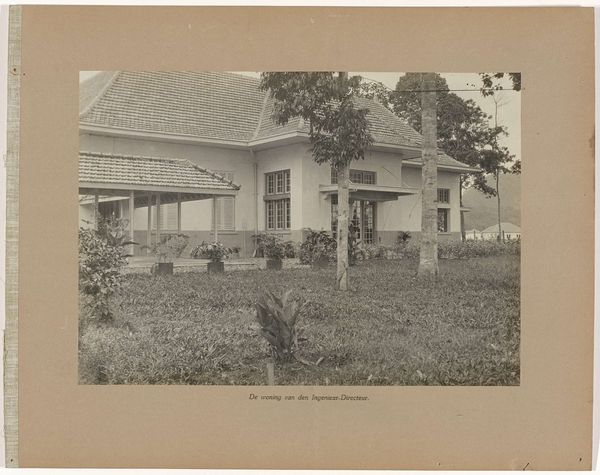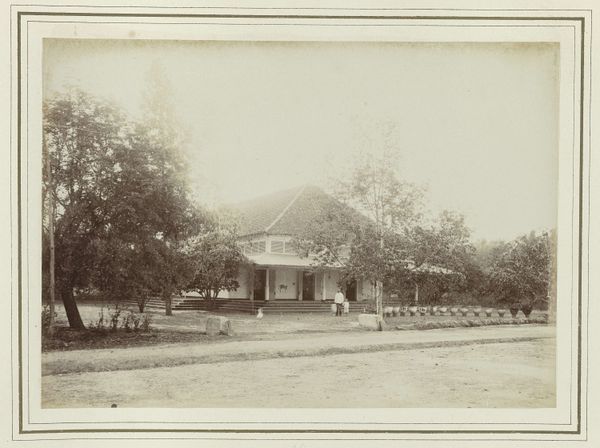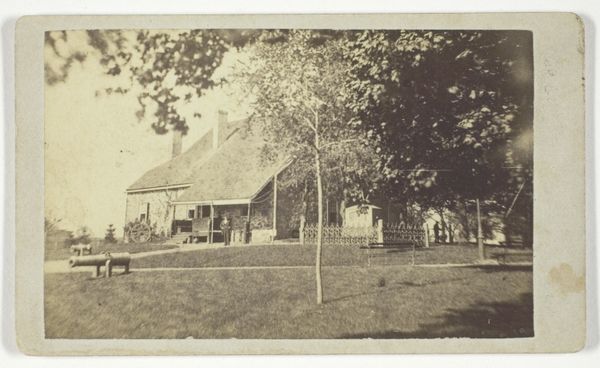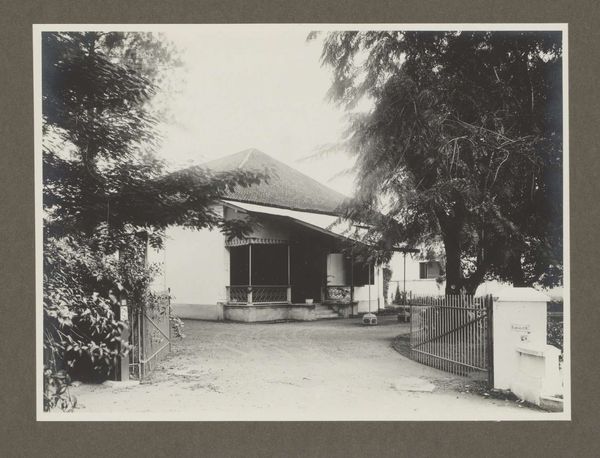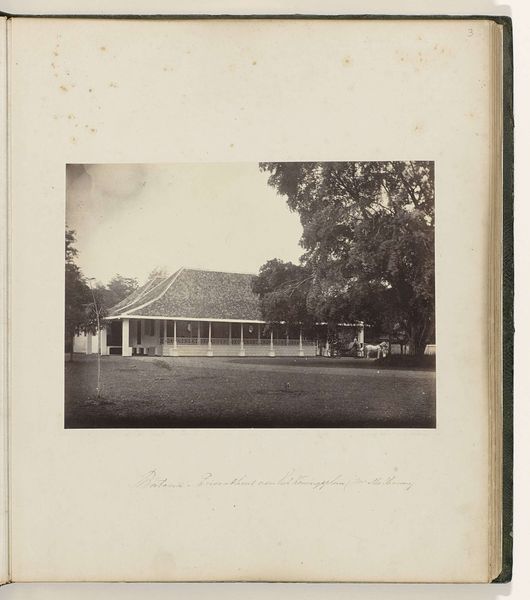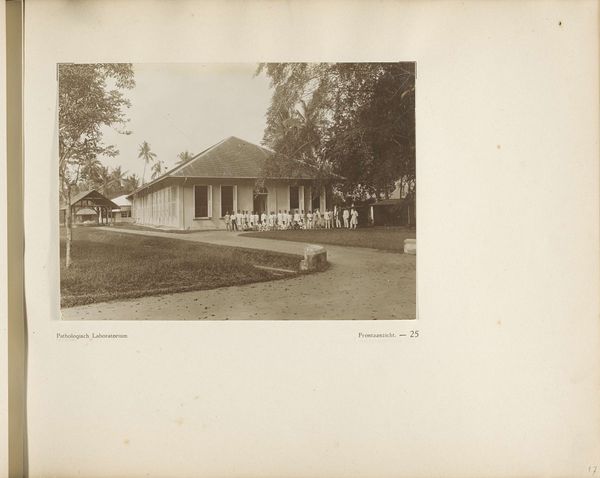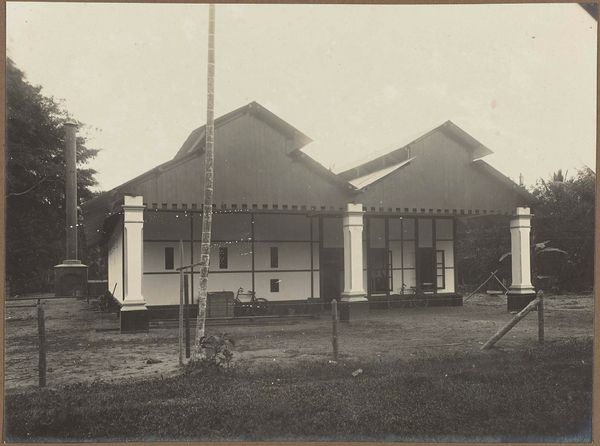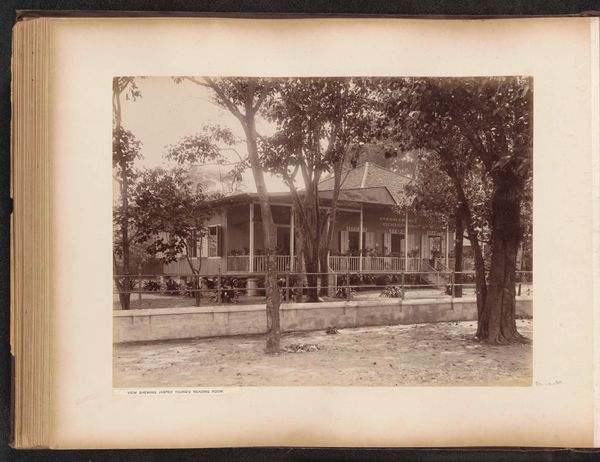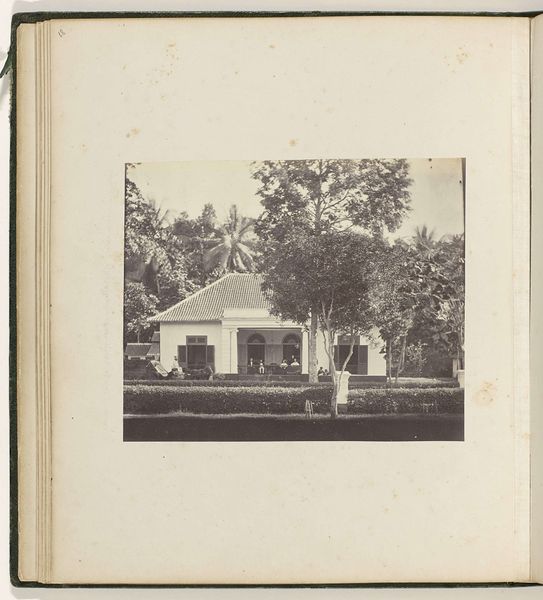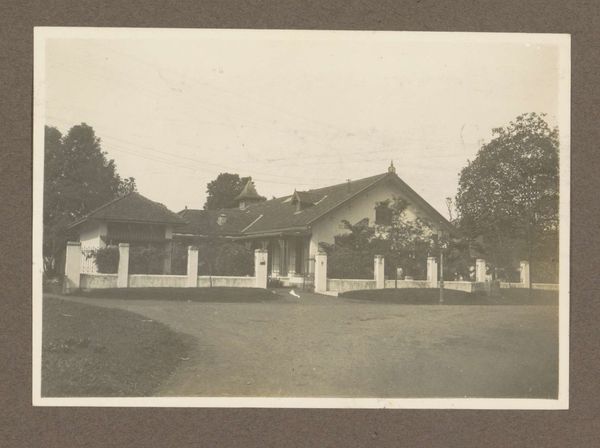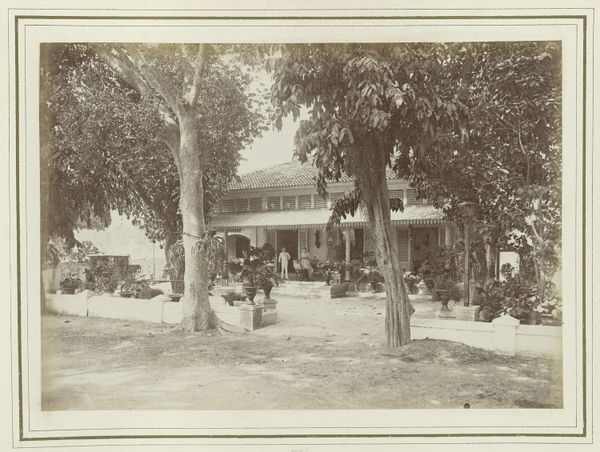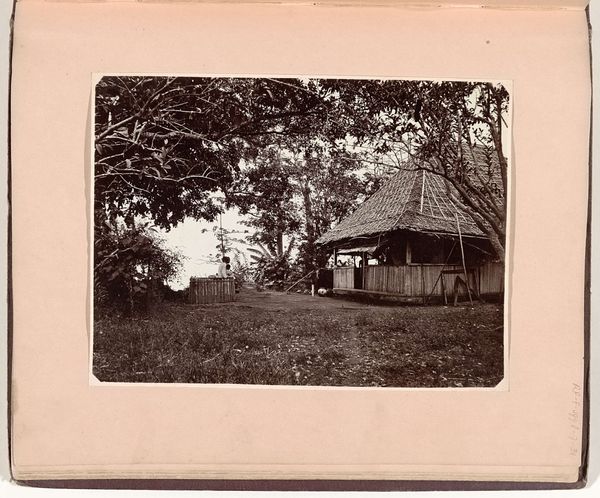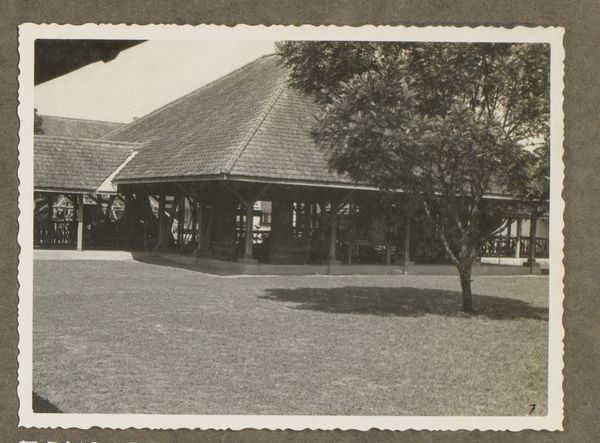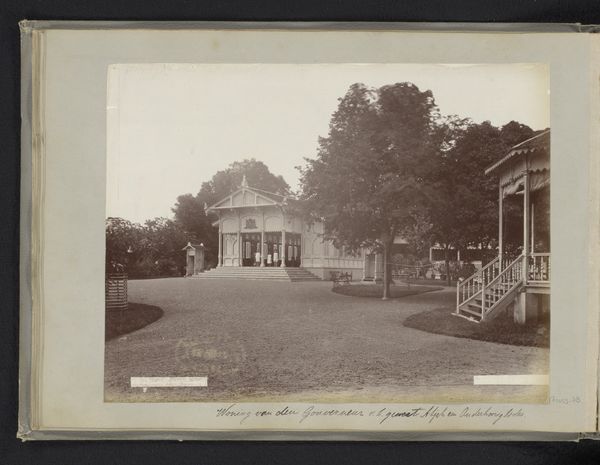
print, photography, site-specific, albumen-print
# print
#
landscape
#
photography
#
site-specific
#
albumen-print
#
realism
Dimensions: height 279 mm, width 392 mm
Copyright: Rijks Museum: Open Domain
Editor: This albumen print, titled "De Societeit 'De Natte Mijn'," dating from around 1921-1922, really intrigues me. It pictures a building with a thatched roof and a sign above the entrance. The texture of the print and the visible organic material forming the structure have a rather direct feeling. What catches your attention in this piece? Art Historian: As a materialist, my eye goes immediately to the construction. Think about what it took to make that photograph and what's represented. Consider the albumen printing process, which involves coating paper with egg whites—what does that suggest about resourcefulness and accessibility? Then consider the building itself, seemingly constructed from locally sourced, perhaps even "cheap," materials. Editor: It seems... almost rudimentary compared to other structures from the period. Is this relevant? Art Historian: Precisely. This “rudimentary” structure calls into question assumptions around "high art" and craftsmanship. Who built it? For whom? Was the building site-specific, designed to meld with the surrounding environment? Furthermore, reflect on the labor that went into creating both the structure and the image – who were the workers, photographers, and consumers of the work, and what does this labor suggest about class structures? Editor: So, rather than just seeing a simple building, you see it as a reflection of material culture and social relations at the time? The photograph is part of the material production as well. Art Historian: Absolutely. It prompts questions about the economic and social contexts of its creation and consumption, disrupting typical ways of thinking about art objects in isolation. Even that visible paper it's printed on has a history related to consumption and industrial production. Editor: I guess I was initially focused on the image itself. Now, I see the photograph and building reflecting larger social patterns related to labor, material resources, and modes of consumption in this time and location. Thanks, I hadn't thought about the economic structure around it all. Art Historian: Indeed. Considering art through the lens of materials opens up a wider and richer view of its meanings. It really adds a lot when trying to truly understand a work.
Comments
No comments
Be the first to comment and join the conversation on the ultimate creative platform.
